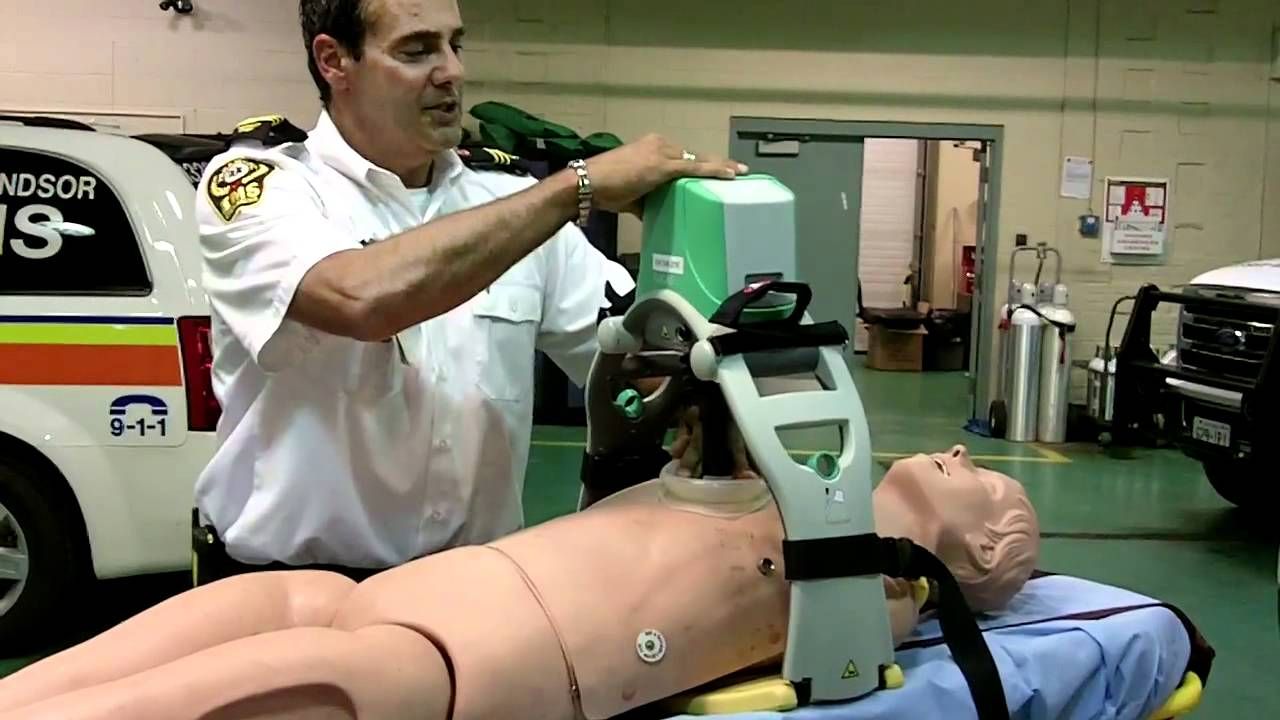Cardiopulmonary resuscitation (CPR) is a lifesaving technique useful in many emergencies, but performing high-quality, consistent CPR can be challenging even for experienced rescuers. Automated mechanical CPR devices aim to address this issue by providing consistent, active chest compressions to patients in cardiac arrest, allowing rescuers to focus on other important tasks. In recent years, technological advances have made these automated CPR devices more portable and user-friendly.
How Automated CPR Devices Work
Automated CPR Devices apply chest compressions through a loading force transferred from a battery-powered piston. The piston compresses and immediately releases the sternum at a rate of around 100-120 times per minute to replicate manual chest compressions. An accelerometer inside the device measures the depth and rate of compressions and provides feedback to ensure consistency. Some advanced models can even adjust compression parameters based on patient characteristics like chest size/shape. Devices attach directly to the patient’s chest with adhesive pads or a suction cup mechanism for full-body application of compressions.
Benefits of Automated Chest Compressions
Consistent, high-quality CPR is crucial for maximizing a patient’s chance of survival and neurologically intact survival post-cardiac arrest. Manual CPR frequently suffers from ineffective or interrupted compressions due to fatigue or distraction of rescuers. Automated devices eliminate these issues by continuously delivering proper compressions without tiring. Many studies have found automated CPR can achieve greater compression depth, rate, hemodynamics and short-term survival rates compared to manual CPR. They allow responders to focus on ventilation, rescuer changes, defibrillation, IV access without interrupting compressions. Some models can even provide real-time CPR feedback to rescuers and alert if compressions are inadequate.
Portability and Easy Deployment
Early automated CPR devices were bulky machines requiring significant set-up time. However, the latest portable devices can now be rapidly deployed by a single responder. Pocket-sized, battery-powered options weigh as little as 2 lbs and easily transportable in ambulances, public access points and emergency bags. Their intuitive designs make them simple for emergency medical technicians and even bystanders to apply correctly with minimal training. The simple attach and go mechanism provides rapid chest compression initiation which is critical in the short time-window for resuscitation after cardiac arrest. Compared to bulky prior models, these portable devices greatly improve the feasibility of providing active CPR in any setting.
Use in Hard to Access Locations
Automated CPR has substantial benefits for performing resuscitation in challenging locations and situations where manual CPR is difficult. This includes in the back of ambulances during transport, in stairwells or tight spaces, on airplanes or trains, or during extrication from motor vehicle accidents. The devices can even be attached to a backboard and continue compressions as a patient is moved. Their application requires minimal space compared to manual CPR. This expands the potential for high-quality active CPR to reach more patients regardless of context. They may even prove useful in the future for compressions in zero-gravity environments like aboard spaceships.
Changing Emergency Response Paradigms
As advanced automated CPR devices become smaller, simpler and more effective, they are changing emergency response paradigms. Many experts argue CPR protocols should transition towards early deployment of an automated compression device on scene rather than beginning manual compressions. This maximizes the short window where active CPR makes the biggest difference to outcomes. Fire/EMS departments have begun equipping all response vehicles with portable devices and training personnel in their use. Some predict that within a decade, automated CPR may replace manual as the standard of care in most out-of-hospital cardiac arrests. The technology’s advantages are creating momentum for revised resuscitation guidelines favoring early device application.
Ongoing Innovation and Clinical Evidence
While automated CPR clearly improves short-term survival currently, ongoing innovation aims to expand its longer-term benefits as well. Developers continue miniaturizing devices to the size of backpacks or even smartphone cases for untrained bystander use prior to EMS arrival. Some explore methods like real-time feedback to detect return of spontaneous circulation during compressions. Others add ventilation capabilities to the device itself. Upcoming studies will explore the technology’s cost-effectiveness and outcomes in specific patient subgroups. Growing clinical evidence demonstrating superior survival and neurological function will be key to wider adoption. If further optimized, automated compressions may one day revolutionize cardiac arrest response and make high-quality CPR accessible to all.
Technological advances are transforming emergency resuscitation. Portable automated CPR devices now provide rapid, consistent chest compressions independent of user fatigue or experience. Their widespread deployment has great potential to increase cardiac arrest survivability globally by ensuring effective CPR delivery wherever needed. Ongoing miniaturization and multipurpose device design will expand access even to lay rescuers. With benefits accumulating in clinical research, automated compressions are set to become the standard of care for out-of-hospital cardiac emergencies in the near future. This revolutionary technology may one day make survival from sudden cardiac arrest less a matter of chance, and more a treatable medical emergency.
*Note:
1. Source: Coherent Market Insights, Public sources, Desk research
2. We have leveraged AI tools to mine information and compile it

